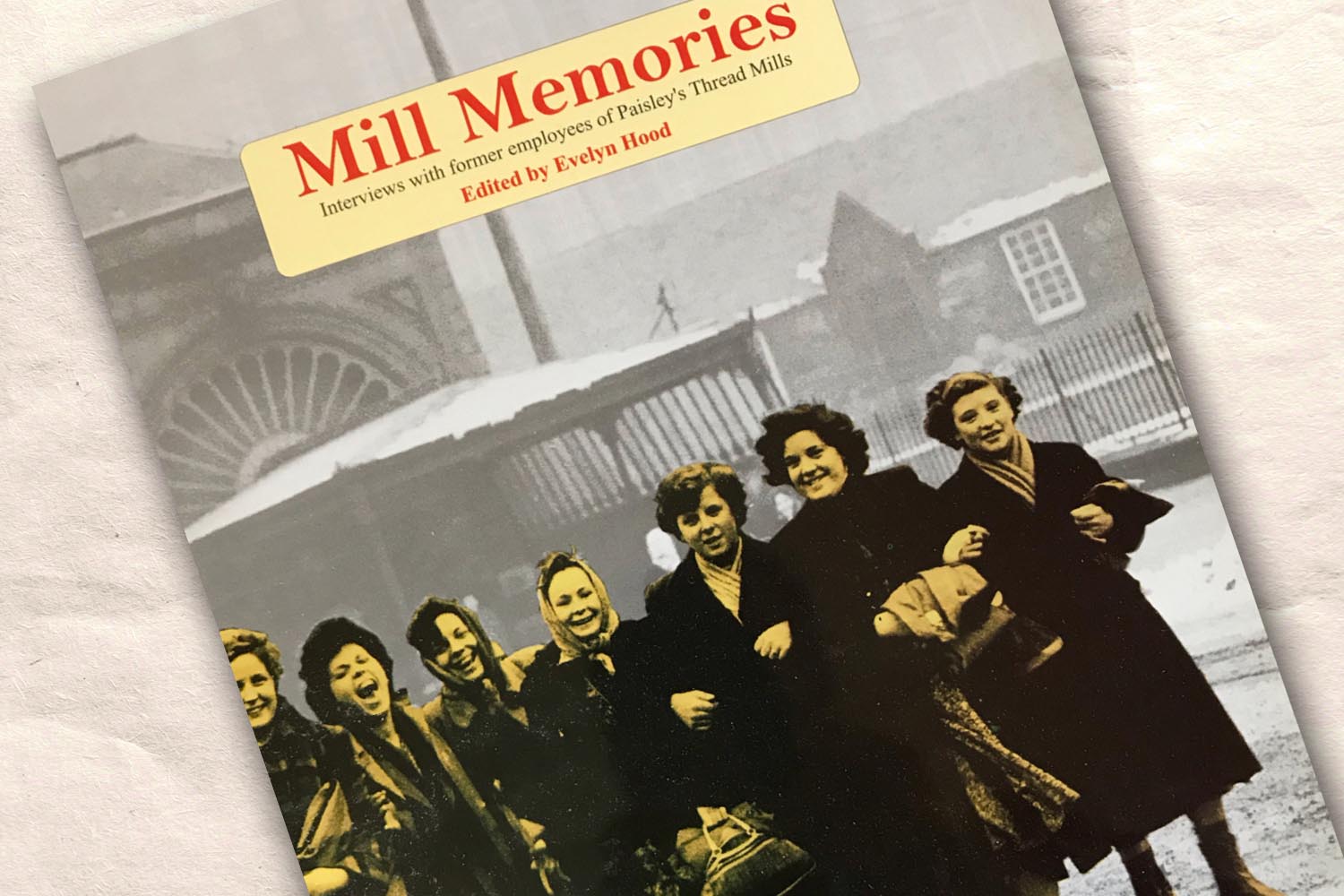
Mill Memories edited by Evelyn Hood book review
Brian Hannan, local author and manager of Abbey Books in Paisley, reviews Mill Memories by Evelyn Hood
After two decades out of print, the acclaimed book by recently-deceased Paisley bestselling author Evelyn Hood has been re-published (and at exactly the same price of £9.99 as before and in an identical format).
In anticipation of the opening of the Thread Mill Museum in 2003, Evelyn interviewed many mill workers so as to preserve in print memories of good (and bad) times at the town’s famous mills.
It’s worth remembering that the mills are now over 200 years old, Peter and James Clark setting up Anchor Mills in 1812, James and Peter Coats following at Ferguslie in 1830.
Although the two companies amalgamated in 1896, they continued operating under their different names, leading to considerable ongoing rivalry especially in the United States.
Between them, they set high standards as employers, over the years at various times introducing a pension scheme, two weeks annual leave, tea-breaks, outings to the coastal resorts, shower facilities, cool drinks in hot weather, ear plugs, calico aprons and then overalls, and even perfume machines (not free).
There was a dentist, nurse and rest room. Heads of new employees were checked for lice. In the dye works, employees were protected by dungarees, clogs, masks, headgear and gloves.
- Mill Magazine: five years of flying the flag for Renfrewshire
- Health Hub: offering innovative solutions to health challenges
- Barnhill Farm: a unique slice of rural life in Renfrewshire
Employees could belong to various social clubs. Bowling, brass bands, stamp collecting, scouts, hockey, cricket (with a professional coach), badminton, and tennis among the activities on offer.
There were a huge variety of jobs. Top of the line were the embroiderers who wore hats and gloves and used face cloths. Older women would teach the rudiments to aspiring embroiderers during tea breaks and you could work up your skills by attending classes (paid by employee not employer).
Twiners worked in bare feet, using their big toes to turn the machines on and off. In the colour matching department, there were over 300 standard shades and around 4,000 which had to be specially made up. Cards were also assembled to go to shops selling the threads.
In Ticketing, bobbins of thread were fed through machines which applied labels, but if the label went on squint, a machinist had to remove it and stick it back on by licking it. In Gassing, stray wisps were burned off.
Box Shop workers shaped cardboard boxes, in Balling the task was to place printed bands round balls of thread and stamp the boxes in which they were transported. The “Cruelty Man” – a work study engineer and rates fixer – was generally, as the nickname suggests, despised.
In the Reeling Department, on the top floor, yarn was wound for bleaching or dyeing. In the 1940s and 1950s the combined dye works got through 250,000lb of thread a week. Toilets were the ideal location for ancillary activities such as ear piercing, setting hair and plucking eyebrows.
Discipline was tough and woe betide you if you ran foul of a supervisor or manager. You were timed when you went to the lavatory. Caught for setting hair or plucking eyebrows during working hours might mean a suspension.
One woman constantly refused permission to go to the toilet – the supervisor ignoring the sign language of flapping her apron – eventually sought employment elsewhere. One supervisor refused to permit whistling and only employed girls who wore stockings.
Unexpected health issues were twiners whose big toes were so overworked they had to be amputated and a woman who required an operation to remove accumulated “caddis/ouse” from her throat.
Beetles and rats were a common hazard and it was noisy, hot and claustrophobic. The Ferguslie Bell, rung to summon workers in the morning and again at the lunch break, can still be seen outside the Sma’ Shot Cottages.
Packed with tales from actual workers and crammed with photographs and with the Thread Mill Museum offering further insight into the workings of the mills, and the new museum due to open, this is superb collection of recollections by nearly 50 employees of times gone by when the mills made the town world famous.
Mill Memories, Interviews with former employees of Paisley’s Thread Mills, edited by Evelyn Hood, is available from Abbey Books and online.

1 Comment
Be interesting to read book of early years as mill workers as I was in Anchor Gassing Department from 1967 till 1983 .